17 Hidden Gems You’ve Never Heard Of That Deserve A Spot On Your Travel Bucket List
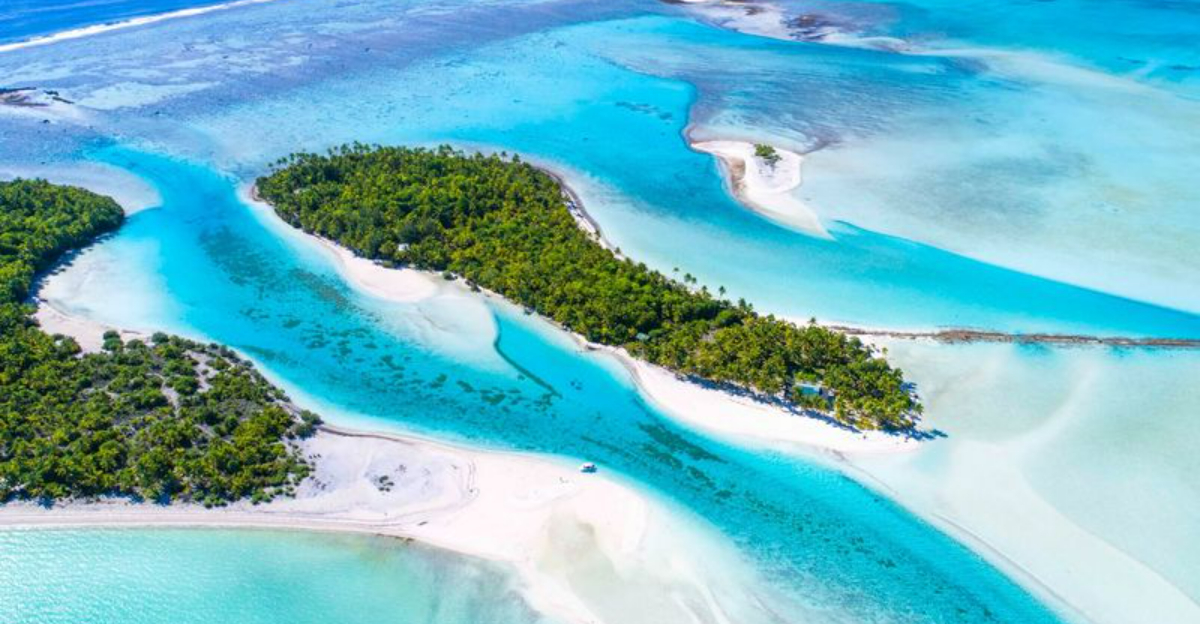
Ever feel like you’ve seen all the typical tourist spots plastered across social media? There’s a whole world of breathtaking places flying under the radar. These hidden treasures offer authentic experiences without the crowds and commercialization of popular destinations.
I’ve gathered some extraordinary spots that most travelers haven’t discovered yet – places where you can experience true wonder without fighting through selfie sticks.
1. Gásadalur Village, Faroe Islands
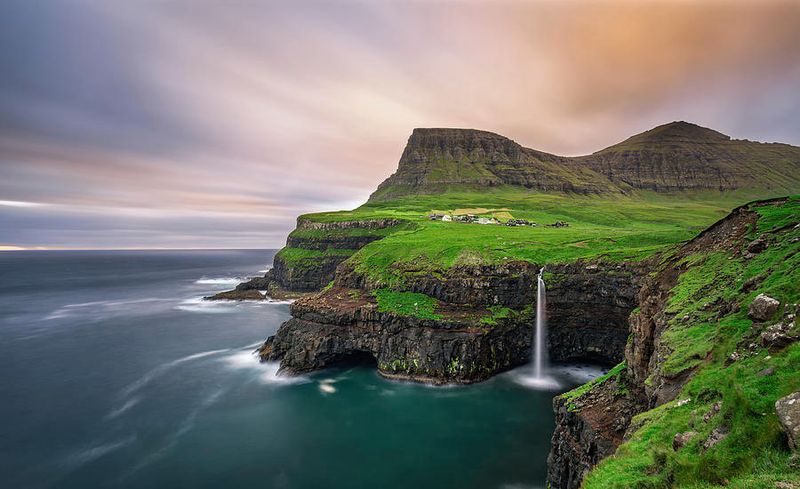
Nestled between dramatic cliffs and overlooking the Atlantic Ocean, this tiny village remained incredibly isolated until 2004 when a tunnel was finally built through the mountains. Before that, residents had to hike over a 400-meter mountain just to reach neighboring villages!
The iconic waterfall plunging directly into the sea creates a scene straight from a fairytale. With fewer than 20 residents, you’ll experience tranquility that’s increasingly rare in our connected world. The hiking trails offer spectacular views that few tourists have captured.
2. Huacachina Oasis, Peru
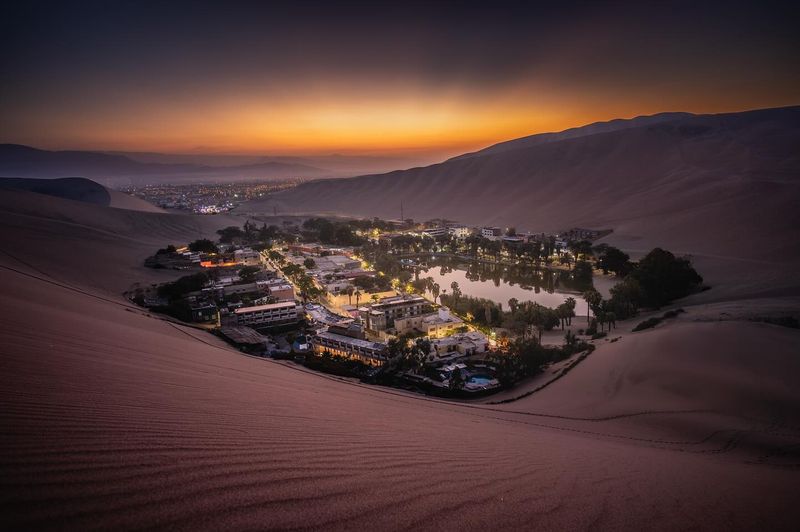
Did you know there’s a natural desert oasis that looks like it jumped straight out of a movie set? This tiny village surrounds a natural lake in the midst of towering sand dunes. Local legend claims the waters have healing properties.
Adventure seekers can try sandboarding down the massive dunes or take heart-racing dune buggy rides. As evening approaches, climb to the dune tops for a sunset that paints the desert gold. With only about 100 permanent residents, this palm-fringed haven feels like a secret mirage.
3. Jiufen, Taiwan
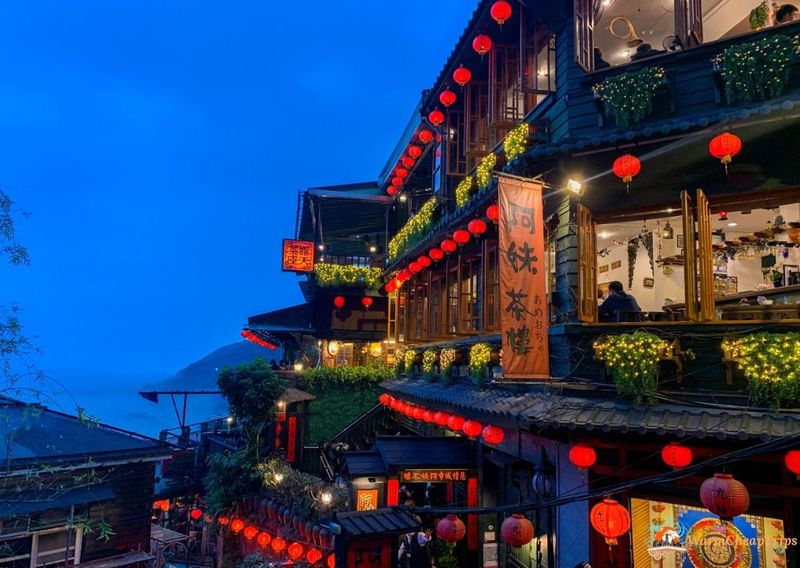
Many believe this atmospheric mountain town inspired the setting for Hayao Miyazaki’s film ‘Spirited Away.’ Winding alleyways lined with red lanterns lead you through a maze of tea houses and street food vendors that seem frozen in time.
The hillside location offers breathtaking views of the northeast coast, especially when fog rolls in around the buildings. I recommend visiting during weekdays to avoid local weekend crowds. The A-Mei Teahouse, with its distinctive wooden architecture, serves exceptional mountain tea in traditional style.
4. Giethoorn, Netherlands

Cars are nowhere to be found in this fairytale village sometimes called the ‘Venice of the North.’ Instead, residents and visitors navigate the town exclusively by boat or on foot across its 176 small bridges.
Thatched-roof cottages sit on small private islands connected by waterways that date back to peat harvesting in the 18th century. The village exudes such tranquility that locals once called it ‘Goat’s Horn’ because they could only hear goat horns in the silence. Rent a whisper boat to explore the canals at your own pace.
5. Blagaj Tekke, Bosnia and Herzegovina

Where a turquoise river emerges from the base of a 200-meter cliff stands a 600-year-old Dervish monastery that feels like something from another world. The spring produces an astounding 43,000 liters of water per second, creating one of Europe’s most powerful water sources.
Inside the monastery, you’ll find beautiful Ottoman architecture and calligraphy. The restaurants built on wooden platforms over the river serve traditional Bosnian cuisine that tastes even better with the sound of rushing water below. Summer visitors can enjoy a refreshing swim in the crystal-clear waters.
6. Las Grutas de Tolantongo, Mexico
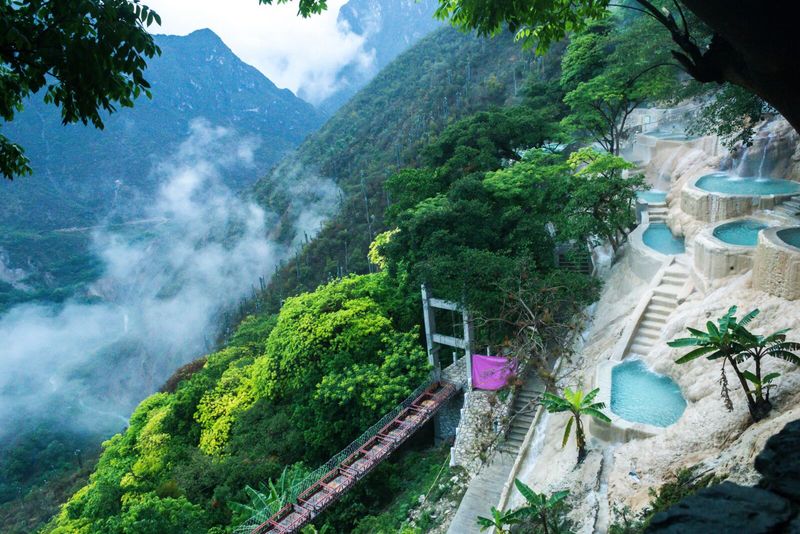
Imagine soaking in natural hot spring pools built into a canyon wall with views of the valley below. These thermal pools are heated by volcanic activity and rich in minerals that locals claim have healing properties.
Beyond the Instagram-famous infinity pools, you’ll find caves with warm waterfalls, a tunnel with hot water flowing through it, and a river with varying temperatures. The remote location in Hidalgo state means you’ll need to rent a car or join a tour from Mexico City. Staying overnight in the on-site accommodations lets you enjoy the pools when day-trippers have left.
7. Waitomo Glowworm Caves, New Zealand
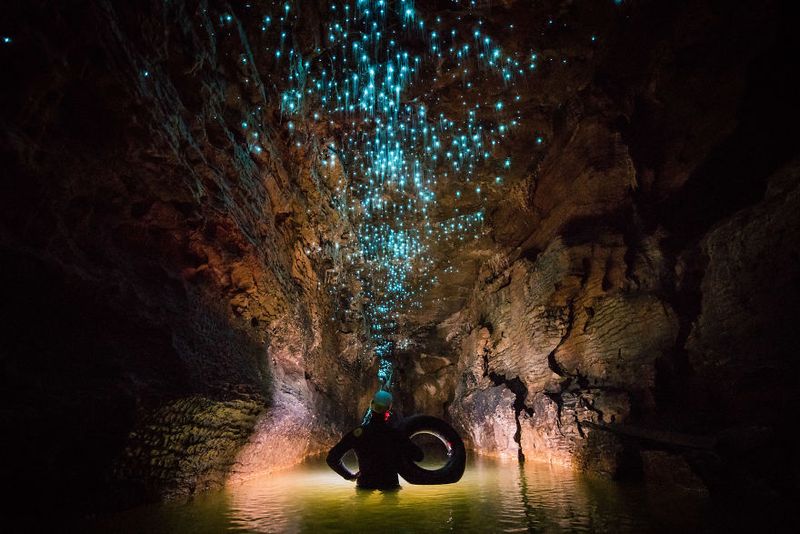
Floating silently through dark caves while thousands of tiny blue lights twinkle overhead feels like traveling through a living galaxy. These lights come from glowworms – small creatures that use their bioluminescence to attract prey in the darkness.
The Māori discovered these caves around 400 years ago and still serve as guides today. For adventure seekers, black water rafting tours let you float on inner tubes through the glowing caverns. The scientific name for these glowworms – Arachnocampa luminosa – hints at their spider-like hunting technique using sticky threads.
8. Svaneti, Georgia

Time stands still in this remote mountain region where medieval defensive towers still dot the landscape. The Svan people have preserved their unique culture, language, and traditions for over 1,000 years, largely due to their isolation among Europe’s highest peaks.
Stone towers built between the 9th and 13th centuries protected families during regional conflicts and avalanches. Hiking between villages offers breathtaking views of the Caucasus Mountains. The local cuisine features distinctive dishes like kubdari (meat-filled bread) and tashmijabi (cheese-potato mash) that you won’t find elsewhere in Georgia.
9. Socotra Island, Yemen

Often called the most alien-looking place on Earth, this isolated island hosts hundreds of plant species that exist nowhere else. The iconic dragon’s blood trees with their umbrella-shaped tops look like something from a science fiction movie.
Separated from mainland Africa for millions of years, Socotra developed its unique ecosystem through evolutionary isolation. The bottle trees with their bulbous trunks store water like natural reservoirs. Though reaching the island requires some determination due to Yemen’s political situation, adventurous travelers find the otherworldly landscapes well worth the journey.
10. Göreme, Cappadocia, Turkey
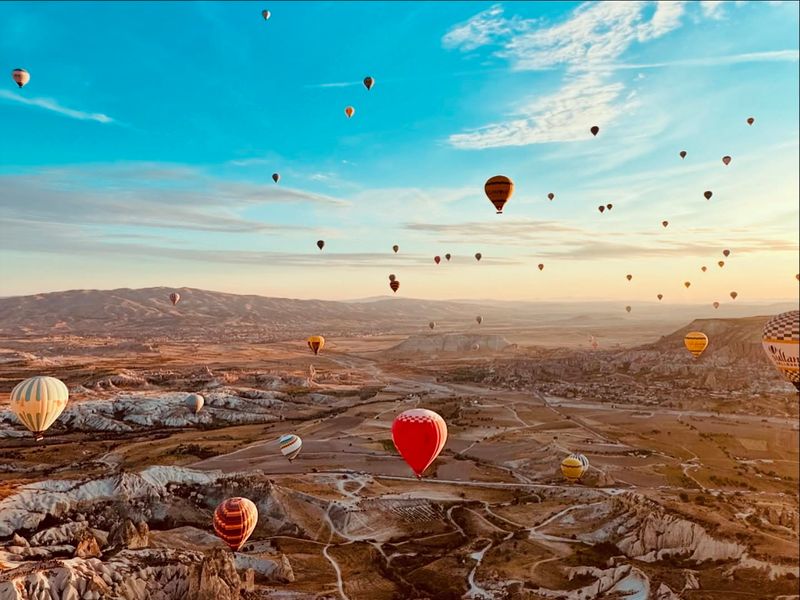
Waking up before dawn is totally worth it when you’re watching hundreds of colorful hot air balloons rise over a landscape of fairy chimneys and cave dwellings. These unique rock formations were created by volcanic eruptions millions of years ago.
People have carved homes, churches, and even entire underground cities into the soft volcanic rock for centuries. Many hotels are built within these cave structures, offering a truly unique sleeping experience. The nearby Göreme Open Air Museum preserves Byzantine cave churches with stunning frescoes dating back to the 10th century.
11. Banff’s Johnston Canyon Ice Walk, Canada

Winter transforms this popular summer hiking spot into a magical frozen wonderland that few travelers experience. Walking along steel catwalks attached to canyon walls, you’ll witness waterfalls suspended in time – massive blue ice formations that seem to defy gravity.
The sound of water still flowing beneath the ice creates an eerie soundtrack to the experience. Night tours by headlamp reveal the ice in a completely different light. You’ll need ice cleats for safety, but rental options are available with most guided tours. The lower falls are accessible for most fitness levels.
12. Aitutaki Lagoon, Cook Islands
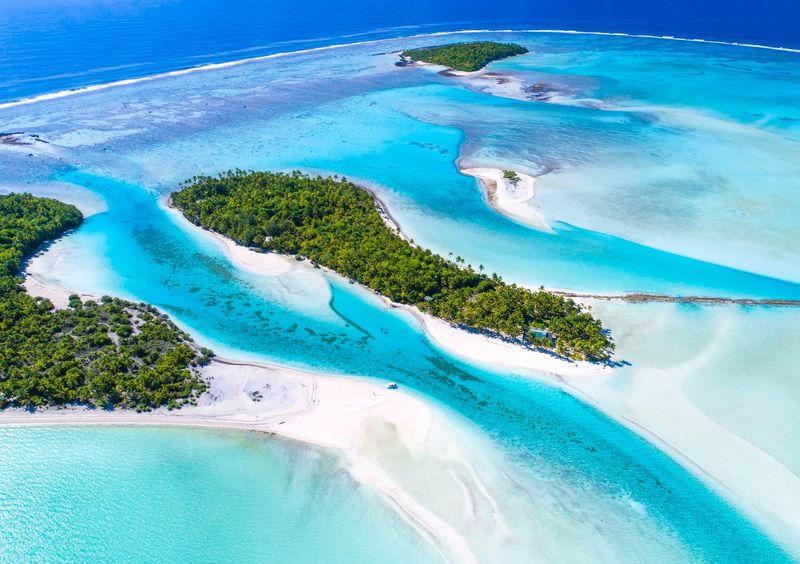
If you asked a child to draw the perfect tropical paradise, they might create something like this heart-shaped lagoon with waters in impossible shades of blue. Unlike its more famous Pacific neighbors, this gem sees just a fraction of the tourists.
The lagoon contains 15 small motus (islets) that you can explore by kayak or small boat. One Foot Island lets you get your passport stamped at the world’s smallest post office. The warm, shallow waters make for world-class snorkeling where you’ll spot giant trevally, colorful parrotfish, and perhaps even sea turtles.
13. Ek Balam, Mexico
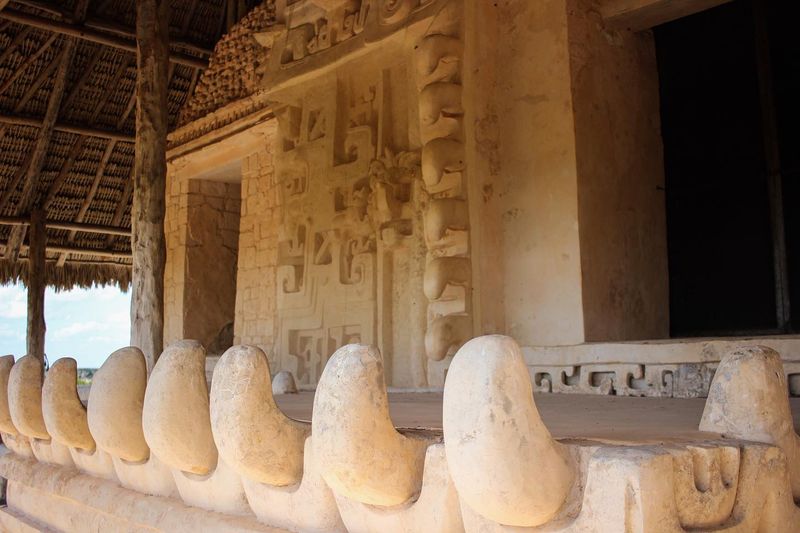
While tourists flock to Chichen Itza and Tulum, this magnificent Mayan site remains pleasantly uncrowded. The name means ‘Black Jaguar’ in the Mayan language, and the main pyramid features an incredibly preserved stucco façade with detailed carvings of winged warriors.
Unlike many Mayan sites, visitors can still climb the structures here. From the top of the Acropolis, you’ll enjoy panoramic views of the jungle canopy. The site was mysteriously abandoned around 1200 CE and remained hidden in the jungle until excavations began in the 1980s. A cenote (natural sinkhole) nearby offers refreshing swimming after exploring.
14. Bukchon Hanok Village, South Korea

Nestled between Seoul’s palaces lies a 600-year-old neighborhood where traditional Korean hanok houses with their distinctive curved roofs create a living museum. Unlike many historic districts worldwide, this remains a residential area where people actually live.
Wandering the narrow alleyways feels like stepping back in time, yet modern cafes and artisan workshops have found homes in some of these historic structures. For the most authentic experience, visit early morning before tour groups arrive. Many houses offer cultural workshops where you can try traditional Korean paper-making, embroidery, or tea ceremonies.
15. Kjeragbolten, Norway

For the ultimate adrenaline photo, nothing beats standing on a boulder suspended 3,200 feet above a fjord. This massive rock became wedged between two cliff faces during the ice age and has remained there ever since.
The hike to reach Kjeragbolten takes about 5-6 hours round trip and involves three steep ascents with chains to assist climbers. No safety equipment protects visitors on the boulder itself – just careful stepping and steady nerves. The surrounding Lysefjord views are equally spectacular, with sheer cliff faces plunging into deep blue waters.
16. Hang Son Doong Cave, Vietnam

How about exploring a cave so massive it has its own weather system, jungle, and river? Discovered in 1990 but not fully explored until 2009, this is the world’s largest cave passage – large enough to fit an entire New York City block with 40-story skyscrapers.
Sections of the cave ceiling have collapsed, allowing sunlight to penetrate and create unique ecosystems inside. Primitive forests grow beneath these skylights. Access remains strictly limited to protect the environment, with only one tour company permitted to lead expeditions. The multi-day adventure involves camping inside the cave and costs several thousand dollars.
17. Lençóis Maranhenses, Brazil
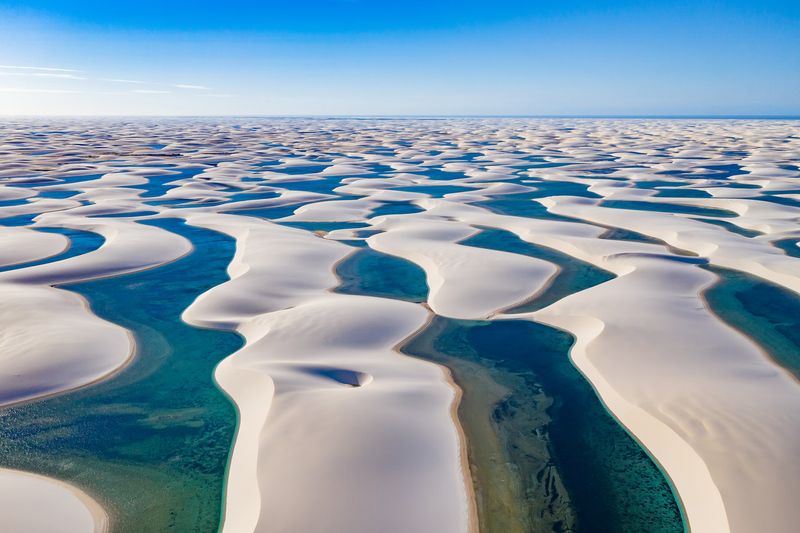
Imagine endless white sand dunes filled with thousands of crystal-clear blue lagoons – a desert that isn’t actually a desert. This national park experiences heavy rainfall between February and May, creating temporary freshwater pools between the sand dunes that last until September.
Though it receives too much rainfall to be classified as a desert, the region’s unique geography prevents vegetation from growing. Swimming in these warm natural pools feels magical, especially at sunset when the water reflects the changing colors of the sky. July and August offer the best balance of full lagoons and sunny weather.
